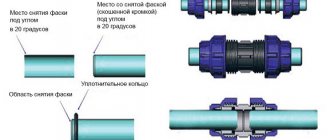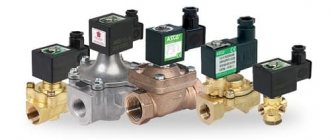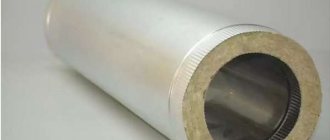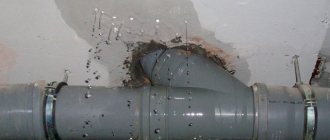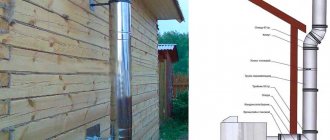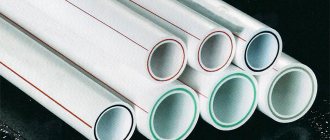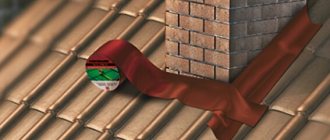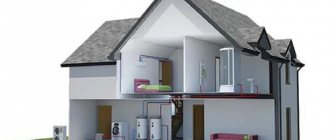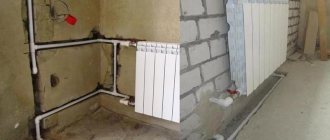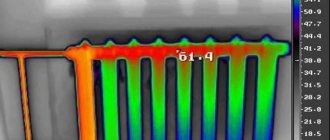What kind of drainage pipe is used for do-it-yourself sewerage
Drainage pipes have their own characteristics. Choose special products with many holes. Thanks to them, water enters the drains and is absorbed into the ground.
Drainage pipe materials:
- Asbestos-cement;
- Ceramic;
- Plastic.
Plastic pipes are most often used. A number of reasons contribute to this choice. So the polymer is lightweight, since it is lighter than asbestos cement and ceramics. This makes installation work easier. In addition, this material is quite durable and inexpensive.
Asbestos cement and ceramics are now used less and less. These are heavy and difficult to install products. Metal for drainage is not used through active corrosive processes in the ground.
The popularity of plastic is determined by other advantages. So polymer is a durable material. It is resistant to corrosion and other aggressive processes. You will also be pleased with the permeability of the pipes; they are absolutely smooth and practically do not clog.
Silt also cannot clog plastic pipes. If the drains are wrapped with geotextile, then small debris will not clog the holes. Groundwater easily penetrates into the drainage system. At the same time, there is a large selection of pipes of different sizes on the market. This allows you to fully equip the drainage system.
Plastic is easy to clean. Operation involves periodic inspection of pipes. The system may need to be cleaned once a year.
Review of popular profile manufacturers of drainage pipes 110 in geotextile filter
The domestic group of companies “Politek” has been operating since 1999. Currently, the following indicators can be noted:
- The annual production volume of polymer pipes and transition elements exceeds 50,000 tons.
- More than a thousand different products in the catalog.
- Readiness for immediate shipment of most items due to the maintenance of solid warehouse stocks (2-4 thousand tons).
A high level of automation of work processes and the use of modern technologies helps the manufacturer offer reasonable prices with high quality.
“NASHORN” is one of the youngest Russian companies in the corresponding profile. This brand offers a wide range of single- and double-wall perforated pipes for drainage systems. The manufacturer gives an official guarantee for its products for 50 years and assures that the actual service life is twice as long.
"POLIPLASTIC" is the largest manufacturer in the CIS. This group includes companies located in the Russian Federation, Belarus, and Kazakhstan. Our own scientific departments ensure timely development and production of the latest designs. Drainage systems and individual perforated pipes are offered on the market under the Perfokor and Korsis brands.
Requirements for the installation of a drainage pipe
Drainage is widely used in areas with high groundwater levels. Drains are installed below the groundwater level. The material of the product itself must be durable, stable and smooth. The liquid must pass easily through the pipes under high pressure.
The strength of the pipes must be such as to withstand the weight of the soil and its possible displacement.
To reduce the possibility of the influence of precipitation, the system is equipped with storm water inlets. In this case, the drains have a surface installation. Next, the system is connected to a common liquid drainage channel.
Requirements for drainage pipes:
- Low temperature resistance;
- Maximum smoothness of the inner walls.
The rainwater inlet should not deform when exposed to low temperatures. If necessary, use insulation of the system. Good permeability of the pipes is necessary so that possible debris can easily pass through the drains. In this case, the system must be equipped with filter elements.
Single-wall and double-wall drainage pipes in a perforated filter
A special smooth coating of the inner surface will help increase the throughput of a corrugated pipe. An additional layer will increase the strength of the structure. Such a double-layer drainage pipe in the filter will last longer and do its job better. As a rule, such products have a ring strength of SN6. 110 pipes in this design are usually sold wound in special coils of 50 m each.
Single-layer and double-layer pipes with perforation - the difference is in the inner layer
Pipes with one layer have ribs on the outside and inside. Such products are more likely to become dirty and require additional maintenance. Most often, pipes of this class are used for constructing drainage wells - after all, they are cleaned regularly.
Required drainage pipe slope
The slope of the pipes is affected by their size. The diameter should not be too large, otherwise there will be a large outflow of water. And this in turn will lead to mud drifts. This will quickly clog the pipeline and require emergency cleaning.
The diameter is related to the slope of the pipes. The smaller the size, the greater the slope.
But if you choose a slight slope, the water in the canal will begin to stagnate. Water will not flow well and will overflow the pipes. Slope is indicated by fractional numbers. The number 0.008 indicates an 8 mm difference per 1 m.
Required slopes for pipes:
- 0.003 is used for water drainage ditches and asphalt roads;
- 0.004 – when covering with crushed stone or laying paving stones;
- 0.005 – when the road is covered with cobblestones.
When the pipe diameter is 90 and 110 mm, the optimal slope is 0.02. With a diameter of 160 mm, an indicator of 0.008 is used. If the cross-section is 200 mm, then the slope is 0.007.
Elements for connecting drainage pipes to each other
Drainage pipes are connected using special fittings. The drainage device can be represented by two systems: open and closed. The first option provides a complex of ditches and trenches for water drainage. The second system has underground pipe laying, where the elements are connected to each other by fittings.
Types of fittings for drainage pipes:
- Universal;
- Plugs;
- Universal tee;
- Swivel tee;
- Transition coupling;
- Crosspiece;
- Transition tee.
The connection of pipes is possible due to the protruding part at the ends of the pipes. Sewerage installation is carried out using plastic fittings. These elements are well sealed and allow liquid to pass through perfectly.
The cross can connect 4 pipes at once. The coupling combines 2 pipes, both the same size and different.
Fittings have many advantages of use. They note lightness, flexibility, tightness. The couplings weigh little, so they do not burden the system. At the same time, the variety of connecting elements allows you to make different wiring. Working with fittings is simple; all processes can be easily done with your own hands. In this case, the pipes can be laid on an uneven surface.
A tee is used to connect several drainage branches. This is also how you can connect a pipe to a well. You can create a complete system over a large area. The adapter tee is used for pipes of different sizes. The rotating option will allow you to install a drainage system called “herringbone”.
Maintenance
Even a properly installed and well-functioning drainage system requires regular maintenance. Inspections of drainage and inspection wells are carried out once or twice a year. Owners should be alert to low water levels, which may indicate:
- about clogged drains; about the appearance of a leak in the pipeline; about silting of the drainage well.
Silt is the easiest to deal with. To do this, it is necessary to clean the drainage drain using a fecal pump with a float shut-off mechanism. Such a unit will automatically cope with contaminated water containing large impurities.
Drains are washed using special equipment. To solve the problem of system clogging, you need to contact a specialist.
In the photo: Drainage sewer installation
The construction of a country house or dacha is often complicated by the high level of groundwater on the site and low permeability of the soil, which subsequently lead to flooding of the foundation, seepage of water into the basements and waterlogging of the soil. Installing drainage will help eliminate the risk of these problems.
That is why the installation of storm drainage systems must begin at the very beginning of creating your country house.
has been successfully designing and installing such systems for many years. Do you need to rid your area of excess moisture? Do you need storm drainage at home?
We are always happy to help you with this. We carry out our work conscientiously and at a professional level. At the same time, the cost of storm sewerage in Moscow is affordable and affordable.
Surface laying of drainage pipes
The work includes creating a plan with pipe routing. The placement of drains and other water drainage elements is taken into account. In this case, the slope of the pipes is taken into account. Surface pipe laying involves installing drains on finished surfaces.
Stages of laying surface drainage:
- Determine the location of liquid discharge. This information is taken into account during planning. The laying depth is determined below the ground freezing level. As a rule, this figure is 60-80 cm.
- Sand traps should be connected to the pipes. This is a kind of liquid filtration.
- When arranging wall drainage, storm water inlets are installed. Rainwater is immediately directed into the ground.
- Next they dig a ditch. The bottom should be compacted and crushed stone laid.
- Then the drainage details are installed. Provide holes for the pipeline. End elements must be equipped with plugs. The pipes are fixed using concrete-sand mortar. Installation begins from the reset point. The joints should be well sealed.
- Next, the heel is made of concrete and the lining is restored.
- Then they check the functionality of the drainage system. When everything looks and functions well, the system is covered with bars.
Operation includes periodic cleaning of sand traps and storm water inlets. At the same time, remove the grates and wash the holes with water pressure. The sediment can be used for economic purposes. It is prohibited to use groundwater for personal needs, it has a different composition.
Where to buy 110 mm drainage pipes in a geotextile filter: prices, current market offers
| Brand/Model | Length, m | Price per linear meter, rub. | additional information |
| Nashorn/N perforated | 50 | 79-92 | Weight of 1 linear meter is 0.486 kg. The pipe is made of HDPE. The recommended laying depth is up to 4 meters. Geotextile: M-100. |
| POLITEK/Series 3000 | 50 | 92-112 | Available with or without perforation, HDPE. Maximum depth: 3-4 m. |
| Corsis/Eco DN/OD 0110 | 12 | 162-185 | Double-layer, without bell. For installation you need to purchase connecting fittings. |
| SK-PLAST/Pipe with filter | 50 | 88-97 | Shell made of geofabric as standard, HDPE. |
When purchasing a 110mm (or any other) drainage pipe, check the price including all overheads. Some nearby specialty stores offer free shipping. Accurate market research can be done using the Internet. To exchange opinions and obtain additional information, use the comments to the article.
Laying perforated drainage pipes with geotextiles
Before installation, calculations are carried out and the necessary material is purchased. Design includes data collection. The local land resources department will be able to provide them.
Required data for design:
- Groundwater level for each season;
- Soil properties and its structure;
- Amount of precipitation.
These calculations will allow you to determine the depth of the pipes. The material used for laying is perforated plastic pipe. To prevent clogging of drains, they are wrapped with geotextiles.
Installation of drainage with perforated pipes and geotextiles:
- First, they mark out the territory, focusing on the wiring diagram. Then they dig a trench. The depth is determined during design, and the width is equal to the pipe plus 40 cm. The slope of the pipes is also taken into account.
- A cushion of crushed stone and sand is placed at the bottom. 10 cm of sand is enough, which will have to be compacted. Then add 20 cm of crushed stone.
- Next, pipes wrapped in fabric are installed. The elements are connected with special couplings.
- You should also make sure that the pipes are sloped correctly using a tensioned cord.
- Inspection wells are installed at turns. They allow you to monitor and clean the system.
- Then you will need to dig trenches. First, crushed stone is poured, then sand, and then the previously dug up earth.
Water is discharged into an open reservoir or sewer. But the end of the pipeline must be equipped with a check valve. An alternative to it is a prefabricated well. When it is full, the liquid should be removed.
Some difficulties may arise during installation. They are associated with common mistakes: insufficient depth, incorrectly selected pipes, broken slope.
It is quite possible to do the installation yourself. It is better to entrust the design to professionals. In other work, you should follow the instructions and correct calculations.
Methods for arranging a drainage structure
When thinking about how to lay a drainage pipe, you need to understand that there are several ways to install drainage structures:
Trenches with crushed stone and sand. Closed drainage, which is grooves dug in the ground, filled with a layer of crushed stone, on top of which sand is laid. For better effect, they can be made in the shape of a “herringbone”, while the central trench, to which the secondary trenches approach, should be made with a slope directed towards the water discharge point. The distance between drains is selected depending on the composition of the soil.
On clayey soils it should not exceed 10, loamy soils - 20 and sandy soils - 50 m. Open drainage. The simplest and cheapest option. It consists of grooves, half a meter wide and about 70 cm deep, dug along the perimeter of the site.
The sides in the drains are made beveled, at an angle of about 30°. Water is discharged from the system into a common drainage ditch. The main drawback of the design is its unaesthetic appearance, which somewhat spoils the landscape of the site. Design using a perforated pipeline.
The most common technology for laying drainage pipes. Deep drainage designed to drain high-lying groundwater. Ceramic or asbestos-cement pipes with holes drilled in them are laid in the ground.
A more modern option is perforated plastic or ready-to-install drainage systems that can be found on sale. Drainage trays. This is a surface drainage that allows you to remove moisture from the site that has fallen on it in the form of precipitation. To equip the structure, special trays are used, which can be made of modified concrete or plastic.
Trenches are led from water intakes to the discharge point, while a slight slope of about 2-3° must be observed. The parts are installed in small grooves, their sides should be at ground level. The top of the trays must be covered with decorative grilles.
If the area is located on a hill, open drainage ditches are dug across the slope. This way it will be possible to “intercept” the water flowing from above.
The disadvantage of an open drainage system is the somewhat unaesthetic appearance of the structure.
This is the most popular drainage system for owners of private plots and country houses
Drainage trays are used to remove excess moisture that enters the area in the form of precipitation.
Installation of drainage pipes (video)
The principle of drainage is to install pipes at a slope, due to which water is drained from the site. It is important to correctly determine the size of the pipes. The installation process itself has many nuances and features, but overall there are no difficulties.
- Author: admin
Rate this article:
- 5
- 4
- 3
- 2
- 1
(0 votes, average: 0 out of 5)
Share with your friends!
